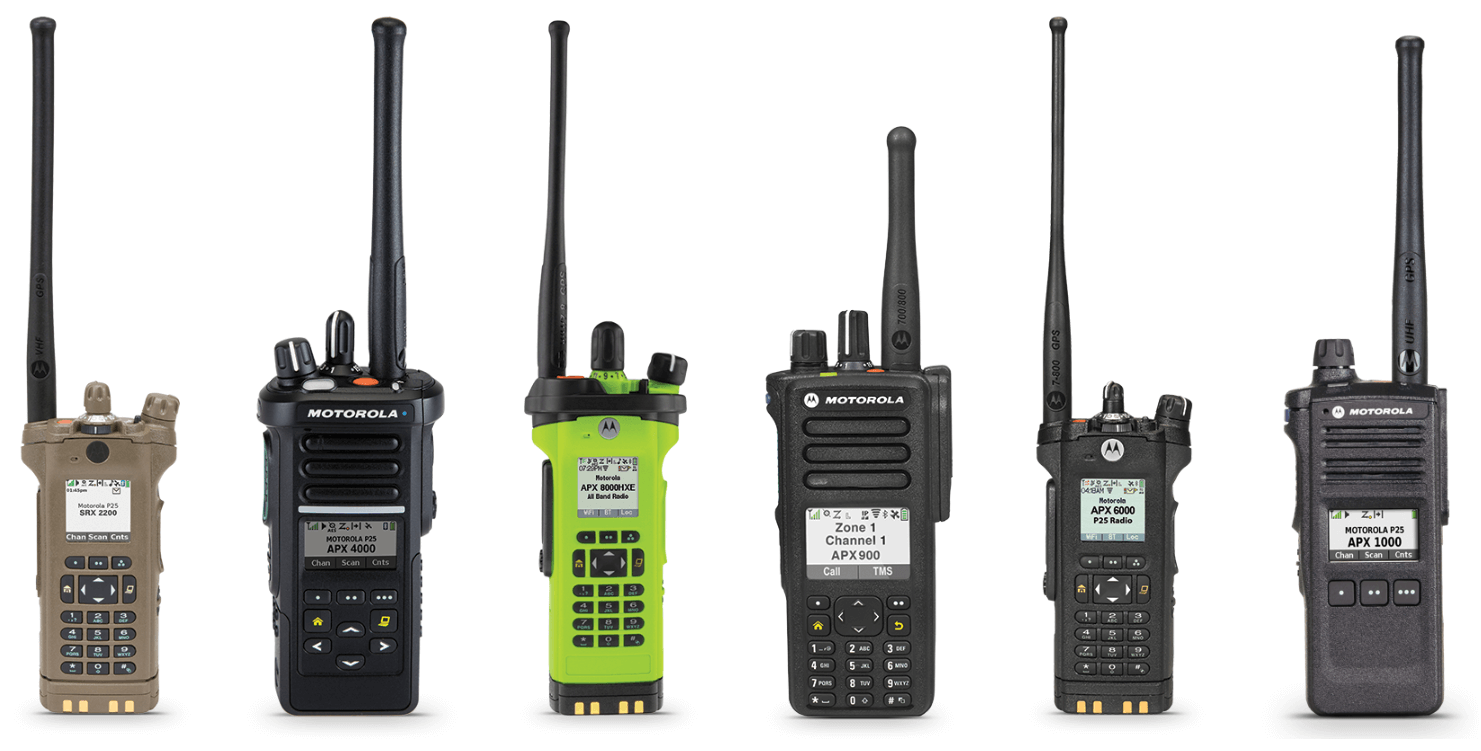
P25 or Project 25 is a standard that provides digital voice and communications systems to public safety and first responders. Project 25 was started by APCO, the Association of Public Safety Communications Officials, in 1989. This project was introduced to ensure two-way radios are interoperable and address the need for digital public safety radios.
P25 is used in more than fifty-three countries around the world for public safety including law enforcement and firefighters. Congress passed legislation for the creation of the P25 Compliance Assessment Program (CAP) to ensure equipment complies with the P25 standards and is capable of interoperability across manufacturers.
First Responders need to seamlessly exchange information in order to respond effectively during day to day calls and emergencies. Many manufacturers have different technical approaches when designing equipment that are oftentimes incompatible across devices. This can result in first responders not being able to effectively respond to emergency operations. As a result of this inconsistency between public safety communication caused the creation of Project 25.
P25 digital radios have many features that are designed to benefit public safety officials. The project gives radios capabilities such as encryption and channels Trunking for security enhancements, operating phases, call alerts, and GPS location services.
Interoperability Across P25 Equipment
Interoperability in two-way radios allows public safety personnel the ability to communicate with other agencies and departments. This is one of the main focuses of improvements with Project 25. A partnership with SAFECOM developed by the Department of Homeland Security communications program assists with emergency response plans and ensuring technology is interoperable.
P25 radios are open standard meaning radio equipment works together and different agencies can communicate with each other no matter if their P25 equipment is from a different vendor.
What is the difference between P25 Phase 1 and Phase 2?
P25 compliant radios have two main phases: Phase 1 and Phase 2. These Trunking phases allow public safety personnel to upgrade their radios to better suit their needs.
Phase 1
- Operates on a 12.5 kHz digital mode compared to a 25 kHz channel. This provides double the number of available channels as before.
- Uses continuous 4 level FM modulation.
- Can use the same bandwidth as a narrow band FM channel.
Phase 2
- More efficient than Phase 1
- Two channels per 12.5 kHz bandwidth
- Each base station has two voice channels.
- Longer two-way battery life
- Backward compatible with phase 1 radios
Phase 2 is only available for trucked P25 systems. Phase 1 is used for radio to radio and conventional operations. P25 is still emerging and more phases are expected to be announced in the future.
Cost of P25 Radio
Analog radios are less expensive than a P25 digital radio. This difference in pricing often defers public safety agencies from converting to P25. The infrastructure and operating costs of maintaining these radios can range around $10,000 per radio.
What is P25 Encryption?
Encryption and security are important in law enforcement agencies who need secure communication without third-party listeners. Digital P25 radios are designed with AES 256 encryption to protect your voice and data communications. Although encryption is available on analog radios, the audio quality and coverage are limited, and a strong signal is often required to listen in.
P25 radios have an inhibit and uninhibit feature which is important with encrypted radios. In the case a radio is lost or stolen, you can disable the radio, so it is no longer functional. This also means if the radio is found by someone no one can listen to communications on those encrypted channels.
Group Calls
Group calls allow for one person to call to a group of people. This method is the primary voice communication on a trunked system. Trunking is used by public safety allowing channels to be shared amongst a large number of agencies such as fire and police.
Is My Radio P25 Compliant?
Many radios are certified APCO Project 25 including,
- Motorola APX 6000
- Motorola APX 4000
- APX Next Smart Radio
- APX8000, 8000XE
- Harris XL-200
- Harris XL-185
- Icom F9011
- Icom F70/F80
Many manufacturers are developing radios that are equipped with P25 standards to help improve interoperability with public safety communications.
How Two-Way Radio Accessories Enhance P-25 Radios
Two Way radio accessories enhance public safety communications professionals ability to communicate Popular accessories include Harris XL-200 handheld radio speaker microphones, surveillance earpieces, radio holsters, and batteries. Radio speaker microphones attach to the side of the radio. The speaker microphone allows for an easy access PTT without the need to pick up a radio and can sit comfortably on the officer’s shoulder. Police radio holsters can protect the radio from unnecessary damage that occurs from daily demands law enforcement encounters. Surveillance earpieces can also attach to the radio to provide undercover units with the ability to communicate covertly. These covert accessories are commonly used by bike patrol, uniformed officers, FBI, and the ATF. In addition to surveillance earpieces public safety personnel depend upon radio earpieces which allow you to discreetly receive messages while remaining attentive to your surroundings.
Closing
P25 radios were designed to make communication easier for public safety. The interoperability ensures different departments and agencies are still able to respond effectively to emergencies and tasks no matter what radio model they are using. Newer radios by popular manufacturers are now P25 compliant and gives public safety more options to purchase equipment. Although Project 25 is still in development, users can now enjoy the benefits of this project to better enhance their communication.
Taylor Thomas is the Marketing Specialist at Waveband Communications and First Source Wireless. She concentrates her writing on public safety covering a wide range of topics on critical communications, and her work has been published by numerous communications industry media platforms. Taylor frequently attends communications conferences including the International Wireless Conference, APCO Conference, and International Police Chiefs Conference.






MexiMeds Express MexiMeds Express MexiMeds Express